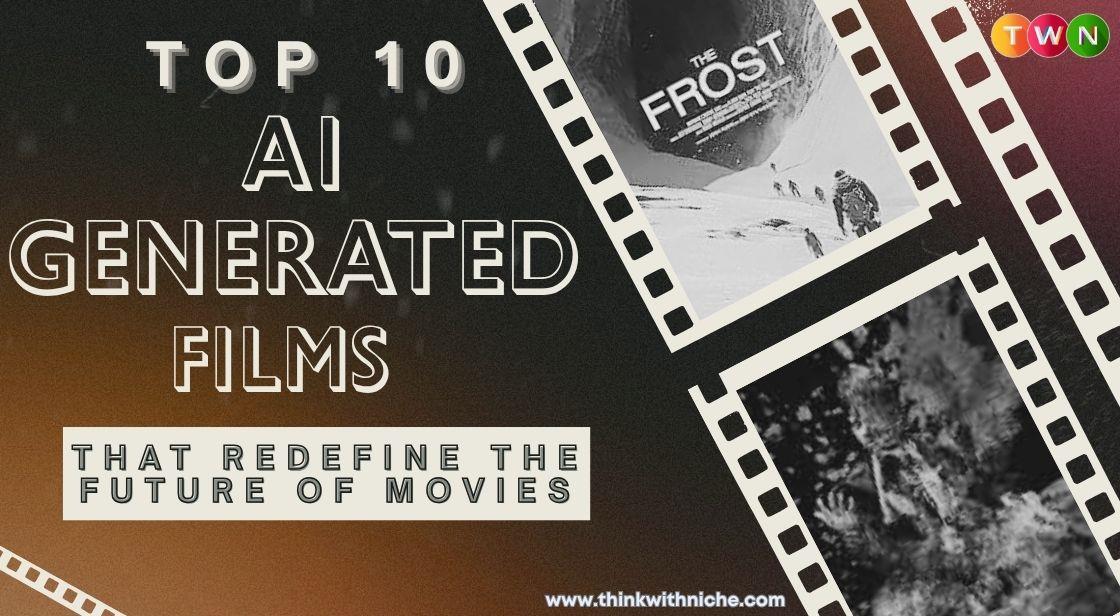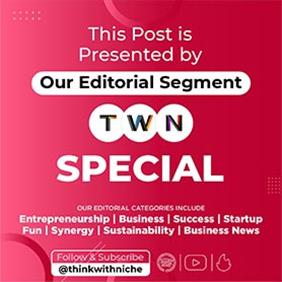Top 10 AI-Generated Films That Redefine the Future of Movies

Blog Post
The Hollywood strikes of 2023, driven largely by the existential threat of Artificial Intelligence (AI) to the livelihoods of writers and actors, placed a spotlight on the accelerating capabilities of generative models.
In the years since, AI has evolved from a futuristic concept to a practical co-creator, fundamentally transforming pre-production, visual effects, and even directorial decisions.
Today, tools like Google Veo 3.1, OpenAI's Sora 2, and Runway Gen-3 offer cinematic realism, narrative flow, and emotional nuance previously impossible, allowing independent creators to achieve near-studio quality at a fraction of the traditional cost.
As major industry players cautiously adopt these tools, independent and short-form creators are leading the charge, using AI to augment human vision and democratize filmmaking. The question is no longer if AI can make a film, but how successfully humans can collaborate with it.
Top AI-Generated Films You Need to See: When Technology Meets Creativity
The earliest examples of AI-assisted films immediately highlighted the technology’s strengths and weaknesses, offering a clear glimpse into the future of this hybrid creative process.
1. The Safe Zone: The World's First AI Scripted and Directed Short
Launched immediately after the debut of ChatGPT, The Safe Zone holds the title of the world's first short film both scripted and directed by AI. Filipino entertainer Richard Juan, recognizing the speed of the emerging technology, quickly tasked ChatGPT with writing the screenplay, generating specific instructions for camera movements, lighting requirements, and even wardrobe.
-
AI Tools Used: ChatGPT (Script & Directorial Notes), DALL-E (Storyboards).
-
Key Takeaway: The film was lauded for being "beautifully shot," suggesting AI models excel at translating abstract technical descriptions into a visually executable plan—a clear challenge to the traditional director's role. However, the dialogue was widely criticized as "clunky and forced," underscoring AI's current limitation in capturing authentic human voice and emotional depth, an area still firmly dominated by human writers.
2. The Frost: Leaning into the Uncanny Valley Aesthetic
This dystopian sci-fi short, set in Antarctica, embraced the surreal visual output of early image generators, deliberately turning imperfections into an artistic style. The narrative of an exploration team investigating a strange signal proved a compelling vehicle for showcasing the bizarre, dream-like quality of machine-generated visuals.
-
AI Tools Used: DALL-E (Video Generation).
-
Key Takeaway: Creator Stephen Parker noted they "stopped fighting the desire for photographic accuracy and started leaning into the weirdness." While the protagonists often suffered from non-existent lipsyncing and uncanny movements—hallmarks of the "deepfake" aesthetic—director Josh Rubin successfully captured a "glacial pace" reminiscent of classic cinema like Kurosawa's The Blizzard. This film redefined AI’s use not as a tool for realism, but as a source of avant-garde visual concepts.
3. Check Point: The Power of Collaborative Intelligence
Check Point stands out as arguably the most successful AI film to date in terms of narrative quality and conceptual clarity. This documentary short, co-created by Hungarian director Áron Filkey and Vox's Joss Fong, expertly blurs the line between human and machine creativity.
-
AI Tools Used: Various Image Generators, GPTChat (Text generation/Script refinement).
-
Key Takeaway: The film is a thought-provoking and informative look at AI itself, using brilliantly simple explanations to tackle complex machine learning concepts. By providing joint credit to both human creators and AI generators, the film embodies its own message: that the true future of filmmaking lies in AI as a collaborative tool that amplifies, rather than replaces, human artistic vision.
4. Given Again: High Concept Artistry via Neural Radiance Fields (NeRF)
Director Jake Oleson used a deeply personal tragedy—the discovery that his deceased father was not his biological parent—as the emotional core for this high-concept film. It showcases a highly technical application of AI to achieve an emotional, abstract effect.
-
AI Tool Used: NeRF (Neural Radiance Fields), a technique that generates photorealistic 3D scenes from a set of 2D images.
-
Key Takeaway: Oleson corrupted the NeRF datasets to create intentionally distorted, visually striking effects, allowing the film to depict a painter losing her grasp on reality. The result is a visual trip with echoes of cinematic masterpieces like 2001: A Space Odyssey and Annihilation, proving AI's utility in creating high-concept, visually abstract, and emotionally resonant cinema.
The New Wave: Trailers, Poetry, and Concept Films
Beyond the initial short films, a new wave of creators is using cutting-edge models (like Luma's Dream Machine and Runway's Gen-3) to create highly specialized, visually arresting content, often focusing on niche genres or complex themes.
5. The End Boys
-
Human Creator: Kavan the Kid
-
Made with: Luma Dream Machine (Early Access)
-
Significance: A chilling film trailer made with next-generation generative tools. It demonstrates AI's rapid improvement in generating realistic and consistent footage for marketing and concept visualization—allowing creators to pitch polished concepts without expensive pre-production.
6. Borrowing Time
-
Human Creator: Dave Clark
-
Significance: A powerful cinematic poem that pushes AI tools to delve into dark civil rights issues of 1960s America. This project highlights the use of generative AI to produce historically or period-specific visuals, enabling narrative storytelling that transcends typical AI novelty.
7. The Myth
-
Human Creator: Hilario Abad, Esteban Diba & Javi Lería
-
Significance: A charming, imaginative short about a child-alien who fears the scary humans seen on TV. It uses AI to craft whimsical and fantastic concepts, showing the technology’s versatility in creating animated or stylized worlds beyond live-action realism.
8. Imagine
-
Human Creator: Anna Apter
-
Significance: A portraiture of children celebrating milestones, paired with a voice-over that encourages viewers to ponder their use of social media. This demonstrates AI being used for social commentary and introspective documentary-style content.
9. The Frost: Part One
-
Human Creator: Josh Rubin
-
Significance: A follow-up to the original concept, this time leveraging newer AI capabilities to enhance the original sci-fi Antarctic tale. Its success signals that AI-generated films, like traditional cinema, can support franchise development and sequential storytelling.
10. Bob Smithee
-
Human Creator: Roberto Beragnoli
-
Significance: A short documentary retelling the life of a director who creates movies that will never exist. This is a meta-commentary, using AI tools to explore the potential and impossibility of the cinematic imagination, framing AI not just as a tool, but as a topic for film itself.
The Future: Collaboration Over Competition
The Hollywood strikes forced a necessary conversation, leading to historic union agreements that established guardrails for AI use—including the requirement for studios to disclose when AI material is used and ensuring human writers and actors are compensated and credited.
As of late 2025, the film industry is embracing a hybrid workflow:
-
AI’s Strength: Technical execution (VFX, CGI, lighting, pre-visualization, deepfake de-aging via tools like Metaphysic). Advanced models like Sora and Veo now generate complex, continuous shots with integrated audio and cinematic camera work.
-
Human’s Strength: Emotional and narrative tone (script refinement, cultural context, character arc development, and the intentional imperfection that defines unique artistic vision).
AI is not replacing filmmakers; it is empowering prompt engineers, generative video designers, and independent creators to tell stories faster and with higher fidelity than ever before, permanently redefining the entry points and production standards of global cinema.
What These Films Tell Us – Key Insights
a) Visual & Technical Innovation Lead, Narrative Trails
Many of the earlier successes centre on the visual/technical side (animation, image generation, cinematography) rather than storytelling. Dialogue, character development and emotional nuance remain hard for AI-only systems.
b) Human-AI Collaboration is Already Strong
Films like Check Point suggest that the most compelling outcomes may come when humans and AI co-create, rather than AI replacing the human entirely.
c) Cost, Speed and Access Are Changing
Some of these projects were made on tiny budgets (e.g., $405 for DreadClub) and in short timescales — showing the democratising potential of AI tools for filmmakers outside major studios.
d) Ethics, Labour & Creative Rights Matter
As AI moves from tool to co-creator, questions arise: Who owns the output? What about actors, writers, artists? The WGA and SAG-AFTRA strikes reflect the industry’s grappling with this.
e) Quality & Audience Acceptance Still Mixed
While the technology is impressive, many viewers still find flaws — lip-sync glitches, uncanny movements, weak writing. These will need to be addressed if AI-films are to compete at the mainstream level.
The Future: What to Watch For
-
Feature-length AI-films: We’re already seeing them; expect more in the next 2-3 years.
-
Hybrid productions: Films where AI handles a portion of the process (e.g., visuals, pre-production) while humans guide story and character.
-
Tools for creators: As AI tools become more accessible (image-to-video, text-to-film), independent filmmakers will experiment more.
-
Regulation & rights: Expect frameworks around usage rights, actor likeness, AI-generated content disclosure.
-
Audience perception: Whether AI-made films are accepted will depend on storytelling and emotional resonance, not just novelty.
Conclusion
The films listed above represent both bold experimentation and early signs of a shift in filmmaking. From The Safe Zone’s rapid short-form experiment to DreadClub’s full-length AI animation, the trajectory is clear: AI is moving from tool to partner.
But the path ahead is still lined with challenges — narrative depth, labour implications and creative ownership among them. For filmmakers, viewers and industry watchers alike, the message is this: the future of movies may well involve artificial intelligence — not as a gimmick, but as a bona-fide collaborator. And the question then becomes: will AI transform cinema or disrupt it?
You May Like
EDITOR’S CHOICE












